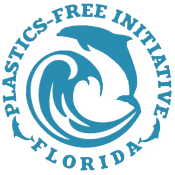The cleanliness of cutting boards is a long-debated food safety issue, given that both wood and plastic — the most common cutting board materials — can easily harbor bacteria. New research shows that using plastic cutting boards can release microplastics. So how concerned should you be?
A 2023 study published in the journal Environmental Science & Technology found that using a plastic cutting board can create between 1,536 and 7,680 small flecks of plastic, which can get onto your knife and into your food. Microplastics are easily ingested due to their microscopic size, and research shows that they can accumulate within the human body.
Understandably, there is concern over the long-term health effects of this, especially given the fact that “microplastics are, indeed, everywhere,” Mark Jones, a retired industrial chemist and chemistry consultant with expertise in microplastics, tells Yahoo Life. In addition to cutting boards, microplastics shed from single-use water bottles, clothing, tires, paint and more, he adds.
How harmful are plastic cutting boards?
Plastic cutting boards are just one of the many ways people are exposed to microplastics. We all already have thousands of microplastic particles within us. However, there is no conclusive evidence yet about their long-term health effects in humans. “We’re just starting to look into the human health impacts,” explains Tasha Stoiber, a senior scientist at the Environmental Working Group.

